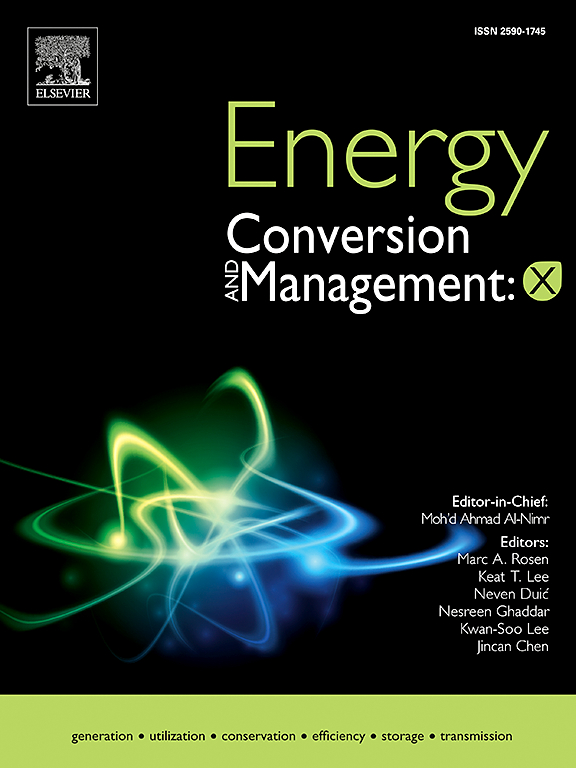Wind-powered hydrogen refueling station with energy recovery for green mobility in sustainable cities
IF 7.1
Q1 ENERGY & FUELS
引用次数: 0
Abstract
This study presents the conceptual design and evaluation of an HRS for light-duty FCEVs. The proposed system integrates wind turbines, a water electrolyzer, three-stage hydrogen compressor, heat recovery and storage, a two-stage Organic Rankine Cycle (TS-ORC), hydrogen storage tanks, a Vapor Compression Refrigeration Cycle (VCRC), and a hydrogen dispenser. Waste heat from the hydrogen compression process is harnessed to power the TS-ORC, where the first stage drives the VCRC and the second stage generates additional electricity. A comprehensive assessment of the system confirmed the system’s compliance with the principles of thermodynamics. The results indicate an overall system efficiency of 25.4 %, and the wind turbines alone achieve 46.21 % efficiency. The overall exergy destruction rate of the system is computed to be 2,120 kW and the main exergy destruction occurs in wind turbines and water electrolyzer. The first and second stages of the ORC exhibit efficiencies of 14.45 % and 6.05 %, respectively, while the VCRC yields a Coefficient of Performance (COP) of 1.24. The specific energy consumption for electrolytic hydrogen production, compression, and pre-cooling are calculated as 58.83, 1.99, and 0.29 kWh/kg, respectively. The hydrogen dispenser fills an onboard hydrogen storage tank with a 4 kg capacity at 700 bar in 5.5 min.
求助全文
约1分钟内获得全文
求助全文
来源期刊

Energy Conversion and Management-X
Multiple-
CiteScore
8.80
自引率
3.20%
发文量
180
审稿时长
58 days
期刊介绍:
Energy Conversion and Management: X is the open access extension of the reputable journal Energy Conversion and Management, serving as a platform for interdisciplinary research on a wide array of critical energy subjects. The journal is dedicated to publishing original contributions and in-depth technical review articles that present groundbreaking research on topics spanning energy generation, utilization, conversion, storage, transmission, conservation, management, and sustainability.
The scope of Energy Conversion and Management: X encompasses various forms of energy, including mechanical, thermal, nuclear, chemical, electromagnetic, magnetic, and electric energy. It addresses all known energy resources, highlighting both conventional sources like fossil fuels and nuclear power, as well as renewable resources such as solar, biomass, hydro, wind, geothermal, and ocean energy.
 求助内容:
求助内容: 应助结果提醒方式:
应助结果提醒方式:


